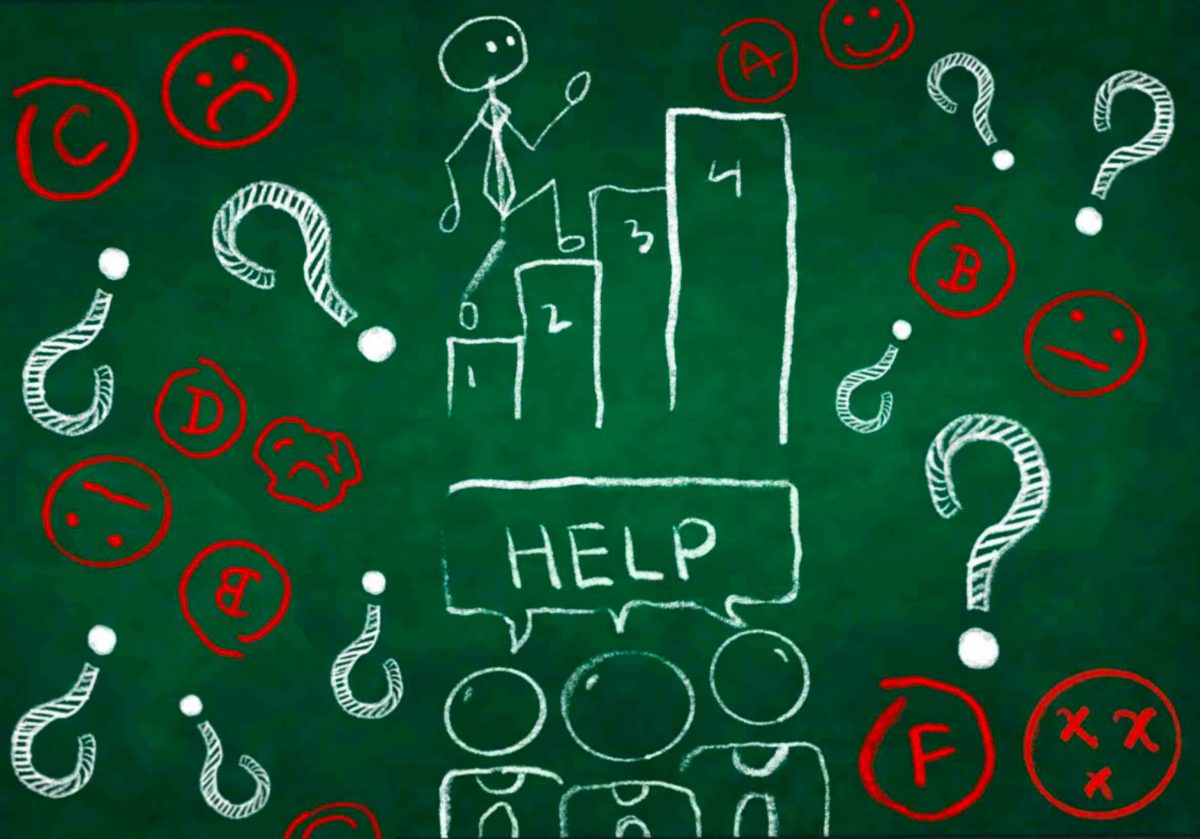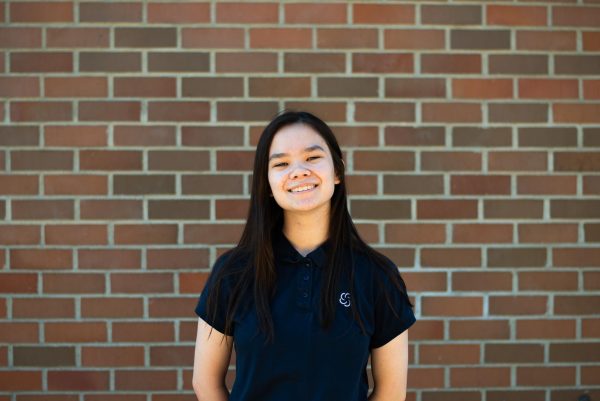Perhaps only the seniors remember the introduction of standards-based teaching and learning (SBTL)—or standards-based grading (SBG), as it is more commonly known by students—during distance learning in the 2020-2021 school year.
Returning students will be familiar with SBTL from an ever-growing roster of classes, including Geometry and Chemistry, as well as more recent additions, such as Physics and various English classes. However, new members of the Upper School may be confused by this novel academic approach.
Despite being implemented more than three years ago, it is only within the last year that Castilleja began officially addressing SBTL, such as in a May webinar for parents and an electronic pamphlet on the publishing platform Issuu.
In these publications, Castilleja confirms that conversations about SBTL have been happening since 2016. Although distance learning has passed, it appears that SBTL is here to stay.
Using scores from 1-4, rather than percentages, to evaluate student work, the goals of SBTL are to “empower students in their learning,” “build healthy mindsets around academic performance,” and “[honor] all students’ cognitive and emotional development needs,” as they appear on a slide in the webinar.
According to Head of Upper School Anne Rubin, these goals were developed from annual Challenge Success survey data and feedback from faculty members. “We’ve all had the experience of trying to support a student who feels like every assessment is a dealbreaker,” she said in the webinar.
But have these goals translated to change? According to students, results are mixed.
Emphasizing learning, not grades
The goal of SBTL is not a good grade, but intellectual growth. In the pamphlet, Castilleja writes that “in this new system focusing on a grade requires a student to focus on learning.”
But to Claire Wong ’24, the changes SBTL brings are marginal. “Right now, standards-based grading is like regular grading, but more complicated,” Wong said.
Anya Sheng ’25 concurred, saying that some standards-based grading systems, like averaging standards together, are very similar to percentage-based grading. “Then what’s the point?”
Making school simpler
Castilleja hopes SBTL will support students’ developmental needs by creating consistency between different academic policies. “Instead of having five rules about how we’re gonna do homework, we’re gonna create one guideline. Instead of having five retake policies, we’re gonna have a single practice that we all share,” Ms. Rubin said in the webinar.
Although Castilleja wants to simplify the classroom experience, it still acknowledges in the pamphlet that teachers implement SBTL in various ways, and that “the specific system [teachers] use is a personal choice.”
“It is so confusing,” Wong said. “I would just like some really clear guidelines on how [SBTL] works, because for each class, it varies.”
The variation Wong spoke to was a common theme among students. “Every course I’ve taken with standards has had a different grading system,” an anonymous student said. Sheng agreed that SBTL “is very different in different classes,” and its efficacy “really depends on the teacher.”
Even within a single class, students can struggle to understand where they stand academically. Because SBTL teachers consider holistic factors—like student progress—when grading, it can “make it hard to tell where you’re at,” Wong said. “In English, I have no idea what my grade is.”
Sheng also found teachers to be reluctant to field questions about SBTL. She recounted an instance where she asked a teacher how they would evaluate a hypothetical mistake on an assessment. The teacher allegedly responded, “It’s not the numbers that matter in this class.” Sheng described this experience as “frustrating.”
As Wong put it, “standards-based grading needs to be simple enough that students are not just trying to play the system.” It seems that SBTL isn’t yet hitting that mark.
Reducing stress
A core tenet of SBTL is forgiveness. Finals are optional, retakes are possible and homework is ungraded practice. According to the Issuu pamphlet, SBTL “is designed to make assessments an integral part of the learning process,” lowering the stakes for students.
Students generally appreciate this sentiment, feeling positively about the flexibility SBTL offers. Kuan believes SBTL is less stressful than percentage-based grading: “With standards, at least you get multiple opportunities, whereas percentages build on each other,” she said.
However, there is still room for growth. Some students find their less stressful SBTL classes too easy.
For example, Sheng’s English II class only evaluated students’ highest score in a standard regardless of their subsequent performance.
Sheng gave an amusing example of the limitations of this policy. While working on an upcoming essay, she found that she already had the maximum score in all standards but “claims.” She speculated that instead of writing the full essay, “I could just write a really good claim [and just submit that].”
Sheng said this system is “more forgiving,” but questioned, “should it be more forgiving?” She added, “from my perspective, it’s like, ‘Yay! I don’t need to try!’ But maybe I’m losing out on some intellectual exploration.”
On the opposite end of the spectrum, some students find their SBTL classes too difficult.
“What they’re trying to do is cause less stress, but [SBTL] causes more stress because no one knows what’s going on,” Wong said.
SBTL can also promote perfectionism. On some standards-based assessments, for example, “a small error will be a 3. And that reinforces the mentality that you have to be perfect,” Kuan said.
And worsening this issue, not all SBTL classes give students the luxuries of optional finals, retakes and more. “I’ve never had the option for an optional final with standards grading,” an anonymous student said. Wong also noted that some classes limit retakes. Sheng’s English II class, for example, allowed students only a single rewrite of an essay per semester.
Even when classes do offer these forms of support, confusion and shame create barriers. Sheng did not take advantage of corrections in her Physics class, saying, “I never figured out how to do corrections…I was too embarrassed to ask.” She confirmed that this negatively impacted her grade.
Students raise the possibility of incorporating the flexibility of SBTL into percentage grading, such as by making finals optional in all classes. “It would work the same way as standards,” Kuan said. “If you need it, you can take it, and if you don’t, it just reduces stress in your life.”
“I think it would make Casti students very happy,” Wong said.
In summary
In my conversations with students, I was plunged into a sea of specific terminology and complex considerations that even I, a student in standards-based classes, found overwhelming.
They explained how some courses keep students’ highest standards, while others use the most common score. Some average standards together, while others compare students’ entire score spreads to a rubric. And order matters—so if a student earns a 2 followed by a 3, that would become a 3 overall, but if they earn a 3 followed by a 2, it could become a 2.
They explained how homework is optional except when it isn’t, like if you want to retake an assessment; and speaking of retakes, those are possible up to a 4, except when their teacher changed it in the middle of the year, so it’s only up to a 3.5 now, and you can only retake an assessment so many times; and the final is optional, except for the students in the other section of the class taught by a different teacher—for them, it’s mandatory.
One told me a story about how on an in-class reflection, their classmate said they deserved a 2 in a standard, ‘so [the teacher] would feel bad for me and give me a 4.’”
Despite these shortcomings, though, most—but not all—of the interviewed students felt positively about SBTL. “I like the idea that you can get full credit on something if you show your mastery later on,” Wong said. Sheng gave it a “thumbs-up, ish.”
But a full-school shift to SBTL would be “definitely not ideal,” Sheng said. “With some classes, it would just feel forced and unnatural,” Kuan added, wondering how world language classes could operate on standards. “I pray that we never end up with theater standards-based,” Sheng said.
“[SBTL] has potential,” Wong concluded. “I don’t know if the system right now, with the 1-4s, is necessarily the best way.”



